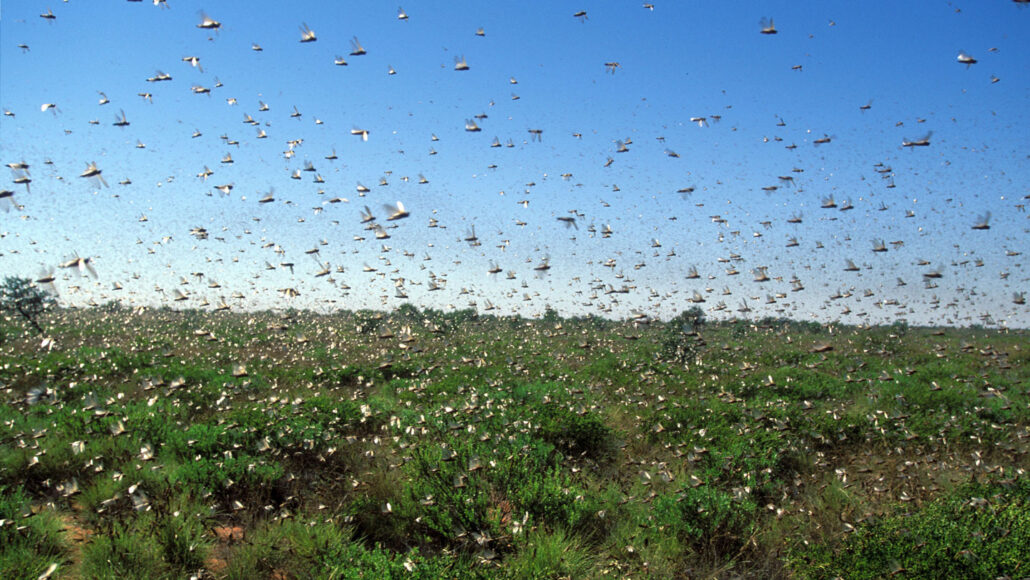Insect swarms might electrify the air as much as storm clouds do
The role insects play in creating electricity in the atmosphere may be unappreciated

Large locust swarms, like the one pictured here, might be able to produce as much electricity as a storm cloud.
John Carnemolla/Getty
You might feel a spark when you talk to your crush. But living things don’t need romance to make electricity. You can build up enough electric charge to shock someone by shuffling socked feet across a carpet. And flying animals, such as insects, can build up charge as they brush past air molecules. Now, research suggests that insect swarms can build up enough electricity to impact the overall charge of the atmosphere.
Researchers shared that shocking find October 24 in iScience.
“Insects are little particles moving around the atmosphere,” notes Joseph Dwyer. And “particles in the atmosphere easily charge up,” adds this physicist. He works at the University of New Hampshire, in Durham, and did not take part in the new study.
Scientists have known for a long time about the tiny electric charge carried by insects. But no one has looked at how that electricity might influence the atmosphere’s electric field. That field affects how water droplets form. It also determines how dust particles move and lightning strikes develop.
A bolt of inspiration
The idea that insects could change the charge of the air in a big way came to researchers by sheer chance.
“We were actually interested in understanding how atmospheric electricity influences biology,” says Ellard Hunting. This biologist works at the University of Bristol in England. One day, a swarm of honeybees passed over a sensor at his team’s field station. That sensor was meant to pick up electricity in the air. But this chance encounter sparked the scientists’ curiosity. Could life forms influence atmospheric electricity?
Hunting’s group included biologists and physicists. They measured the change in the strength of an electric charge when other swarms of honeybees passed over their sensor. This revealed an average increase of 100 volts per meter. The denser the insect swarm, the greater the charge.
This got the team thinking about even larger insect swarms. Locusts, for instance, can form clouds as big as 1,000 square kilometers (386 square miles).
The team measured the charges of single desert locusts as the insects flew in a wind tunnel powered by a fan. Then, the team combined those measurements with data on the densities of real locust swarms from past studies. This allowed them to build a computer model that estimated the electric charge of a whole locust swarm.
Clouds of locusts could produce about as much electricity per meter as storm clouds, the scientists now report.
Electric effects
The results highlight the need to explore the unknown lives of airborne animals, Hunting says. Those animals can sometimes reach much greater heights than honeybees or locusts. Spiders, for instance, can soar kilometers above Earth to reach new habitats. They do this by “ballooning” on silk threads.
“There’s a lot of biology in the sky,” Hunting says. Insects and birds and microbes all carry many little bits of charge. “Everything adds up.”
Some insect swarms can be huge. Still, electrically charged flying animals are unlikely to ever be dense enough to produce lightning, Dwyer says. Their presence could, however, mess with storm tracking. “If you have something messing up our electric-field measurements, that could cause a false alarm,” Dwyer says. “Or it could make you miss something that’s actually important.”
The full effect that insects and other animals have on atmospheric electricity remains to be seen. But Dwyer says the new results are “an interesting first look.”







